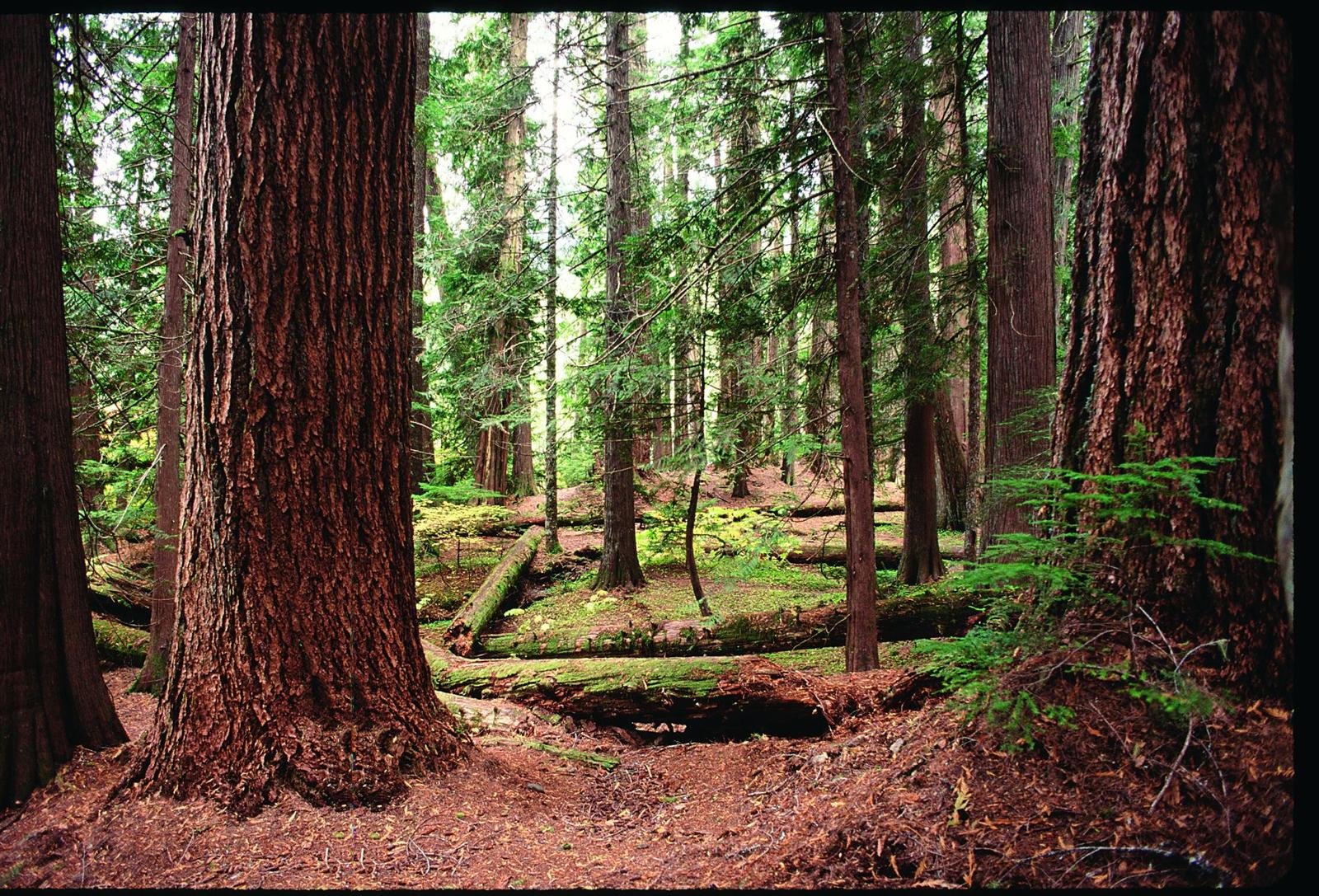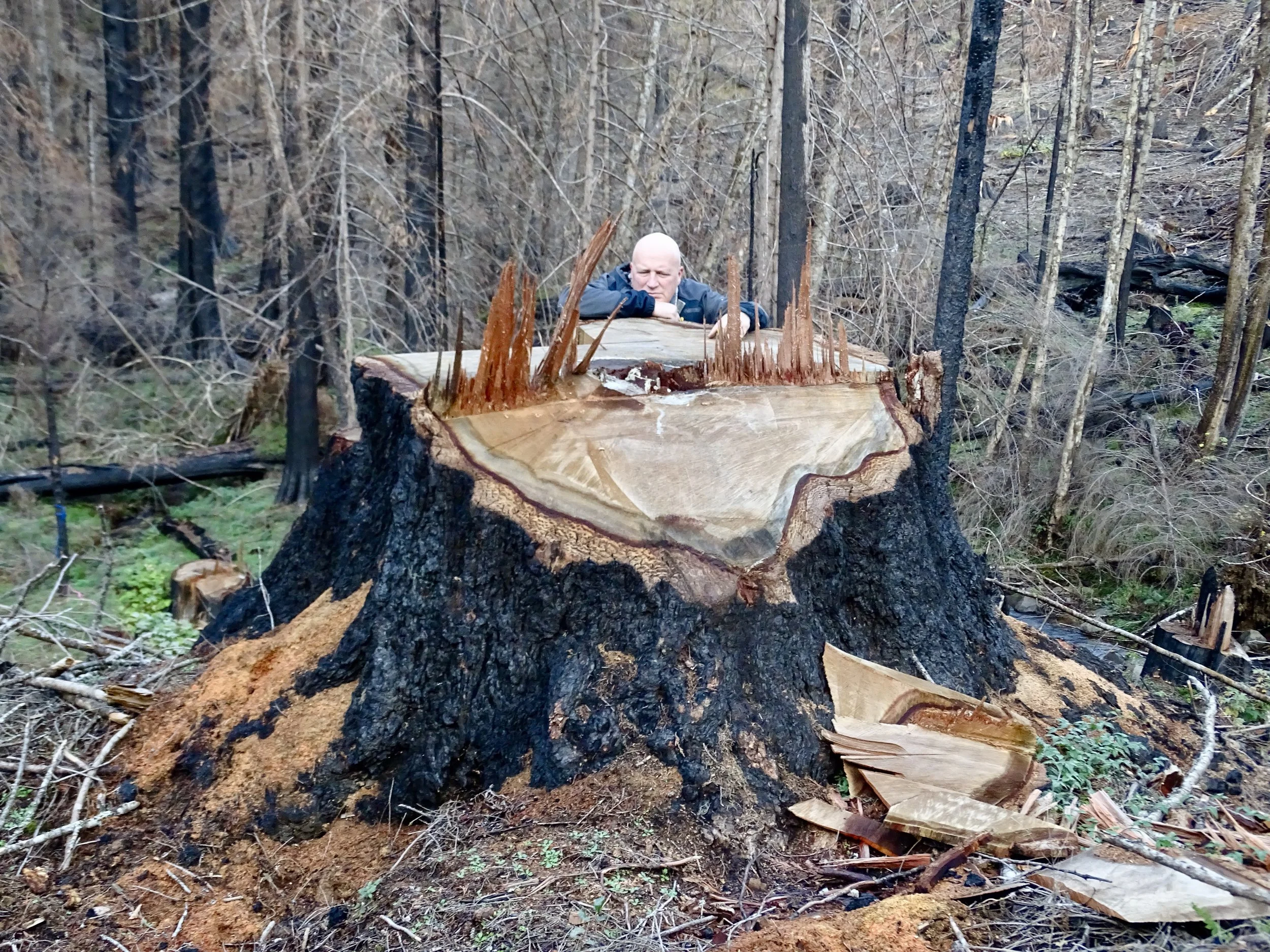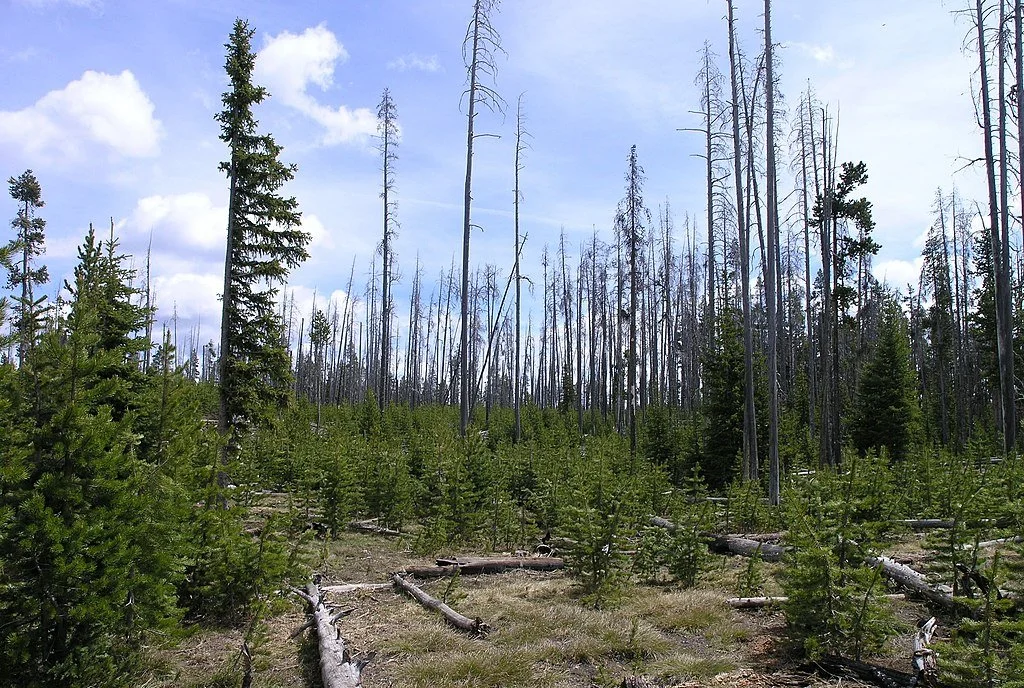Like bankruptcy, the death of the Northwest Forest Plan has proceeded slowly and might end quickly.
Read MoreThe Demise of Northwest Forest Plan

National Forest System
Like bankruptcy, the death of the Northwest Forest Plan has proceeded slowly and might end quickly.
Read MoreTop Line: America’s national forests have lost the greatest inside champion they’ve ever had.
Figure 1. Jim Furnish, 1945–2025. Source: LinkedIn.
I’ve interacted with hundreds of Forest Service employees since I began agitating for wilderness designation of national forest roadless areas in 1975. Of all those hundreds of Forest Service employees, only two really impressed me. Both were forest supervisors on national forests in Oregon. Both were one of a kind. In the end, the Forest Service bureaucracy rejected both.
One was Bob Chadwick, whose star shone brightest while he was supervisor of the Winema National Forest in south-central Oregon in the late 1970s. Bob died in 2015.
The other was Jim Furnish, retired (not really by his choice) deputy chief of the Forest Service. Furnish died on January 11 at his home in New Mexico at age seventy-nine. I knew he was sick but didn’t know how sick. He was on my list to do a “preremembrance” for, essentially a eulogy that the eulogized can read themselves. Alas, procrastination and denial on my part prevented me from telling Jim how much he moved the conservation needle during his life and career, so this remembrance will belatedly honor his enormous contribution.
Backdrop: The Forest Service Culture
When I started my wilderness activism, almost all Forest Service employees I met wore metaphorical green underwear underneath their green uniforms. They believed in the agency’s mission at the time: converting “decadent” and “overmature” old-growth forests into thrifty and vigorous monoculture plantations. (I’m pretty confident today that green underwear is a thing of the past in that it is rare to see Forest Service line officers wearing their green outerwear at all.)
The way one advanced in the Forest Service as a line officer (a district ranger reported to a national forest supervisor who reported to a regional forester who reported to “the chief”) was to “get the cut out.” When a “smokey” (Forest Service employee) said “the chief,” their tone of voice changed perceptibly to invoke reverence. Just about every district ranger secretly saw themselves as “the chief,” and all figured they had a good chance of being a regional forester someday.
There is a change that occurs among Forest Service line officers when they realize they won’t ever become “the chief.” Most respond by caring less and riding out their years in the Forest Service until pension time. A few (alas, very few), however, find the realization freeing.
One Exceptional Forester: Bob Chadwick
One of those exceptions was Bob Chadwick. On the Winema, Chadwick acted upon four major matters: empowering women in the agency, treating the Klamath Tribes (from whom much of the Winema was purchased) better, reintroducing fire into fire-dependent ecosystems, and—most dangerously—lowering “the cut” (the planned-for annual timber volume sold). In re the latter, Chadwick sought to protect roadless areas and dramatically lower logging levels.
Alas, this very bright star was soon extinguished. For “the good of the service,” Forest Supervisor Chadwick was “promoted” to be an “executive assistant” to the regional forester in Portland, a position that did not exist before or after Chadwick’s tenure. He was basically told to count paper clips and keep quiet. Instead, Chadwick continued to promote his idea of consensus as a better way to manage public land. He soon left the Forest Service and continued on as a consultant until he died in 2015. Bob was way ahead of his time and the Forest Service crushed him.
Another Exceptional Forester: Jim Furnish
Jim Furnish was in charge of the National Forest System from 1999 to 2002. During his tenure, he was the primary author of the Roadless Area Conservation Rule, over the objections of almost every Forest Service line officer save the top line officer, who was the only one who counted, Chief Mike Dombeck. The roadless rule, covering 58 million acres of the National Forest System’s 193 million acres, prohibits road building and almost all kinds of logging there. (Alas, some loopholes exist.) Before becoming deputy chief, Furnish transformed the Siuslaw National Forest in Oregon’s Coast Range from one of the most heavily logged national forests anywhere to one of the least logged.
Born in Tyler, Texas, Furnish got his first Forest Service job as a seasonal on the Tiller Ranger District of the Umpqua National Forest. As it was 1965 and I was in the fourth grade, our paths didn’t cross until later, when he became forest supervisor of the Siuslaw National Forest, headquartered in Corvallis, from 1991 to 1999.
In between he was a forester on the Black Hills National Forest in South Dakota, a district ranger on the Bighorn National Forest in Wyoming, a staff officer on the San Juan National Forest in Colorado, and appeals coordinator in the chief’s office in Washington, DC. After supervising the Siuslaw, Furnish was appointed deputy chief over the heads and objections of all nine regional foresters, who figured the job should have gone to them.
Furnish’s Tenure on the Siuslaw as an Agency Reformer
Furnish first came to the Siuslaw as deputy supervisor in 1991 and soon was appointed supervisor. The Siuslaw, like most national forests, was in turmoil. It was the home of both reformers who could see the forest beyond the logs-to-be and some severely unreconstructed timber beasts who sang “Timber über alles” coming and going from work, during work, and in their dreams. One Siuslaw wildlife biologist told me in the late 1980s that the only good biologists in the Forest Service were assholes. (Charlie was one of them; I loved him for it.)
Soon after becoming supervisor, Furnish forced four of the biggest timber assholes out of his office; three were given early retirement and one took a demotion.
Things began to change on the Siuslaw. The reformer Furnish soon benefited from a huge tailwind in the form of a federal court injunction against essentially all federal logging within the range of the northern spotted owl. The Pacific Northwest forest wars had gone from guerilla skirmishes to epic set-piece battles.
It was a good time to be an agency reformer. As Furnish later wrote in his memoir, Toward a Natural Forest: The Forest Service in Transition:
Prior to Judge Dwyer’s ruling, the Forest Service had inexorably, incrementally sought to tame the vast and valuable forests of the Pacific Northwest. Aggressive logging of public land rested on a foundation of a growing nation’s demand for wood. And the nation trusted the Forest Service as long as its policies seemed consistent with public values. But public values can change. Distrust can grow.
Following the war in Vietnam, a new generation viewed government with increasing skepticism and cynicism. Fewer and fewer people accepted sweeping vistas dominated by clear-cuts and new roads. Instead, they valued naturalness, clean water, abundant fish and wildlife, and a deep sense of connection with the land. They were anguished at what the Forest Service was taking from the forest at the expense of future generations.
You can plant all the trees you want, but you can’t make a forest. That’s God’s business.
Figure 2. Any reforming Forest Service employee today should read Furnish’s memoir. So too should the reconstructed (no longer unreconstructed, but still) timber beasts, who should ask themselves if anyone would bother to read their memoir if they bothered to write one. Source: Oregon State University Press.
By the way, most retired line officers in the Forest Service hated Jim Furnish, as they had made their careers by being timber beasts. Furnish was a messenger they wanted to shoot before, during, and after a district court judge and a US president told the Forest Service to obey the law.
During his tenure on the Siuslaw, Furnish did many remarkable things, but we shall focus here on timber, roads, and fish.
Changing Timber Targets
When Furnish got to the Siuslaw, the new forest plan set a target of 215 million board feet (mmbf) annually, down from 320 mamba throughout the 1980s.
(A programmed timber target was one thing; the agency was in the habit of even more logging in the name of salvage, etc. I remember the actual annual losses reaching in excess of 450 mamba. I remember that particular number because it was what Congress required the Forest Service to annually sell from the Tongass National Forest in Alaska under a law passed in 1980. The Siuslaw has 623,000 acres, while the Tongass has more than 15 million acres—equal to all national forest land in Oregon.)
President Clinton’s Northwest Forest Plan dropped the timber target on the Siuslaw to 23 mmbf from 215 mmbf. A later remapping of riparian reserves (no-cut stream buffers with a minimum of 300 feet on each side) found there were significantly more highly dissected streams in the Oregon Coast Range than first thought, and this new analysis reduced the possible timber target to ~8 mmbf. Between the ESA-protected northern spotted owl and marbled murrelet and various imperiled stocks of Pacific salmon, almost all of the Siuslaw National Forest was protected as either late-successional (mature and old-growth forest) reserves or riparian reserves, respectively.
Furnish directed the logging that could be done on the Siuslaw to focus on 120,000 acres of plantations that were established after the mature and old-growth forest was clear-cut. On those plantations, only one species, Douglas-fir, had been planted, and herbicides were often used to ensure nothing competed. The result was Douglas-fir plantations of even height and even spacing, more akin to a cornfield than a forest.
Under Furnish the Siuslaw went big on variable-density thinning, which had the objective of putting the plantations on a path to once again become mature and old-growth forests. As trees in Oregon’s Coast Range grow almost all year and generally in good soils, the logs that came from such thinning were commercially valuable to those mills that had retooled away from old growth. Most had. Not as profitable as liquidating old growth, but that ship had sailed.
Closing Roads and Helping Fish
By the time the spotted owl hit the fan in 1990 and the injunction was imposed, the Siuslaw had 2,700 miles of roads—2.7 miles of road for every square mile of land. Under Furnish, two-thirds of all the roads were closed to the public, relieving the federal treasury of the road maintenance burden and relieving wildlife of all those intrusions on what they called home.
Most Siuslaw timber roads were engineered enough to get the big logs out and to the mill but not to endure during massive storm events. Their damned culverts were engineered to allow big logs to pass over them but neither large amounts of water and large woody debris during big storm events nor fish to pass through them.
Under Furnish, the Siuslaw embarked on a massive program of making the roads hydrologically invisible to the watershed, primarily by doing two things: (1) ripping out undersized culverts to allow water and debris to flow freely, and (2) water barring the roads so the water falling on the road very soon was flowing downhill off the road and not into undersized ditches that fed those undersized culverts. The Siuslaw staff compared water-barred and un-water-barred roads, and the barred roads didn’t erode into huge landslides into creeks.
The result was improved water quality, restored fish passage, and enhanced fish habitat.
After the Fall
After leaving the Forest Service, Furnish continued to agitate from without as he had done from within. In his “retirement,” he served on the boards of several organizations, including WildEarth Guardians, Wildlands CPR, Geos Institute, and Evangelical Environmental Coalition. He was also a close advisor of the Climate Forest Campaign. He helped focus media attention on mature and old-growth forests everywhere and in particular on the Forest Service mismanaging (overcutting) his beloved Black Hills National Forest in South Dakota.
Furnish summed up his tenure at the Forest Service thusly: “The spotted owl crisis, and my years on the Siuslaw National Forest, offered many circumstances and opportunities to confront troubling realities and foster profound change.”
Thank you, Jim.
Bottom Line: Jim Furnish illustrated that although it is far too rare, a person can enter the federal bureaucracy and lease as a public servant who changed it for the better.
For More Information
American Forests. February 2, 2016. Jim Furnish, retired deputy chief, USDA Forest Service (web page).
Family of Jim Furnish. 2025. Official Obituary of James “Jim” Richards Furnish.
Furnish, Jim. 2015. Toward a Natural Forest: The Forest Service in Transition. Oregon State University Press, Corvallis.
Heller, Marc. January 14, 2025. “Logging limits pioneer dies at 79.” Greenwire.
While the election of Donald Trump is a setback for the conservation of mature and old-growth forests, such can be overcome.
Read MoreThe most ecologically rational and fiscally prudent course is to eschew thinning before reintroducing fire into fire-dependent forests.
Read MoreWhen political realities come up against ecological realities, the former must be changed because the latter cannot.
Read MoreThe O&C Lands Act of 1937 should be repealed by Congress and all BLM lands in western Oregon to either the Forest Service or the Fish and Wildlife Service.
Read MoreThe prospective defeminization/emasculation of the Northwest Forest Plan by the Forest Service is likely inevitable. All the more reason for the Biden administration to promulgate an enduring administrative rule that conserves and restores mature and old-growth forests.
Read MoreThe world’s largest ecosystem management plan is under existential threat.
Read MoreAs public lands conservationists continue their fight to save the last of the mature and old-growth forests for the benefit of this and future generations, we must not forget the preforests.
Read MoreUnderstanding the history of public lands is useful if one is to be the best advocate for the conservation of public lands.
Read MoreBlumenauer’s bill would open up Mount Hood National Forest to new logging loopholes.
Read MoreWhile we should appreciate the greatness of great leaders, we must not ignore the things they did that were the opposite of great.
Read MoreThe president could use authority granted long ago by Congress to significantly elevate the conservation status of large areas within the National Forest System.
Read MoreThis is the third of three Public Lands Blog posts on 30x30, President Biden’s commitment to conserve 30 percent of the nation’s lands and waters by 2030. In Part 1, we examined the pace and scale necessary to attain 30x30. In Part 2, we considered what constitutes protected areas actually being “conserved.” In this Part 3, we offer up specific conservation recommendations that, if implemented, will result in the United States achieving 30 percent by 2030.
Top Line: Enough conservation recipes are offered here to achieve 50x50 (the ultimate necessity) if all are executed, which is what the science says is necessary to conserve our natural security—a vital part of our national security.
Figure 1. The Coglan Buttes lie west of Lake Abert in Lake County, Oregon. According to the Bureau of Land Management, it “is a dream area for lovers of the remote outdoors, offering over 60,000 acres of isolation,” and the land is “easy to access but difficult to traverse.” The agency has acknowledged that the area is special in that it is a “land with wilderness characteristics” (LWCs), but affords the area no special protection. Congress could designate the area as part of the National Wilderness Preservation System (Recipe #24), or the Biden administration could classify it as a wilderness study area and also withdraw it from the threat of mining (Recipe #1). Source: Lisa McNee, Bureau of Land Management (Flickr).
Ecological realities are immutable. While political realities are mutable, the latter don’t change on their own. Fortunately, there are two major paths to change the conservation status of federal public lands: through administrative action and through congressional action.
Ideally, Congress will enact enough legislation during the remainder of the decade to attain 30x30. An Act of Congress that protects federal public land is as permanent as conservation of land in the United States can get. If properly drafted, an Act of Congress can provide federal land management agencies with a mandate for strong and enduring preservation of biological diversity.
If Congress does not choose to act in this manner, the administration can protect federal public land everywhere but in Alaska. Fortunately, Congress has delegated many powers over the nation’s public lands to either the Secretary of the Interior or the Secretary of Agriculture (for the National Forest System), and—in the sole case of proclaiming national monuments—the President.
Potential Administrative Action
Twenty-two recipes are offered in Table 1 for administrative action by the Secretary of the Interior, the Secretary of Agriculture, or the President. The recipes are not mutually exclusive, especially within an administering agency, but can be overlapping or alternative conservation actions on the same lands. While overlapping conservation designations can be desirable, no double counting should be allowed in determining 30x30. A common ingredient in all is that such areas must be administratively withdrawn from all forms of mineral exploitation for the maximum twenty years allowed by law.
Mining on Federal Public Lands
An important distinction between federal public lands with GAP 1 or GAP 2 status and those with lesser GAP status is based on whether mining is allowed. Federal law on mineral exploitation or protection from mining on federal public lands dates back to the latter part of the nineteenth century with the enactment of the general mining law. Today, the exploitation of federal minerals is either by location, leasing, or sale. The administering agency has the ability to say no to leasing and sale, but not to filing of mining claims by anyone in all locations open to such claiming.
When establishing a conservation area on federal lands, Congress routinely withdraws the lands from location, leasing, or sale. Unfortunately, when administrative action elevates the conservation status of federal public lands (such as Forest Service inventoried roadless areas or IRAs, Bureau of Land Management areas of critical environmental concern or ACECs, and Fish and Wildlife Service national wildlife refuges carved out of other federal land), it doesn’t automatically protect the special area from mining.
Congress has provided that the only way an area can be withdrawn from the application of the federal mining laws is for the Secretary of the Interior (or subcabinet officials also confirmed by Congress for their posts) to withdraw the lands from mining—and then only for a maximum of twenty years (though the withdrawal can be renewed). A major reason that particular USFS IRAs and BLM ACECs do not qualify for GAP 1 or GAP 2 status is that they are open to mining.
More Conservation in Alaska by Administrative Action: Fuggedaboutit!
The Alaska National Interest Lands Act of 1980 contains a provision prohibiting any “future executive branch action” withdrawing more than 5,000 acres “in the aggregate” unless Congress passes a “joint resolution of approval within one year” (16 USC 3213). Note that 5,000 acres is 0.0012 percent of the total area of Alaska. Congress should repeal this prohibition of new national monuments, new national wildlife refuges, or other effective administrative conservation in the nation’s largest state. Until Congress so acts, no administrative action in Alaska can make any material contribution to 30x30.
Potential Congressional Action
Twenty-two recipes are offered in Table 2 for congressional action. The recipes are not mutually exclusive, especially within an administering agency, but can be overlapping or alternative conservation actions on the same lands. However, they should not be double-counted for the purpose of attaining 30x30. A commonality among these congressional actions is that each explicitly or implicitly calls for the preservation of biological diversity and also promulgates a comprehensive mineral withdrawal.
Bottom Line: To increase the pace to achieve the goal, the federal government must add at least three zeros to the size of traditional conservation actions. Rather than individual new wilderness bills averaging 100,000 acres, new wilderness bills should sum hundreds of millions of acres—and promptly be enacted into law. Rather than a relatively few new national monuments mostly proclaimed in election years, many new national monuments must be proclaimed every year.
For More Information
Kerr, Andy. 2022. Forty-Four Conservation Recipes for 30x30: A Cookbook of 22 Administrative and 22 Legislative Opportunities for Government Action to Protect 30 Percent of US Lands by 2030. The Larch Company, Ashland, OR, and Washington, DC.
Figure 1. Whitebark pine on the Fremont-Winema National Forest. Source: George Wuerthner (first appeared in Oregon Wild: Endangered Forest Wilderness, Timber Press, 2004).
After decades of dithering, the Fish and Wildlife Service has finally proposed listing the species as “threatened” under the Endangered Species Act (ESA).
Read MoreThe old forests of the Pacific Northwest are in far better condition today than they would be if not for Professors Jerry F. (for Forest!) Franklin and K. Norman Johnson.
Read MoreFigure 1. The Coleman Rim Inventoried Roadless Area on the Fremont-Winema National Forest, somewhat protected by the Forest Service Roadless Area Conservation Rule. Source: Sandy Lonsdale (first appeared in Oregon Wild: Endangered Forest Wilderness, Timber Press, 2004).
The bill still needs work if it’s to do more than merely restore the status quo prior to the Trump administration.
Read MorePart 3 suggests what the Forest Service could do to improve the Eastside Screens, in both the short and long term.
Read MoreMany conservation organizations are quite concerned and are girding their collective loins for battle. The Forest Service insists that the changes they propose won’t undermine the intent of the Eastside Screens. Who’s right?
Read MoreIn 2019, Senator Ron Wyden and Representative Earl Blumenauer met with various stakeholders at Timberline Lodge to discuss the future of greater Mount Hood. Senator and Representative: What’s your plan?
Read More













